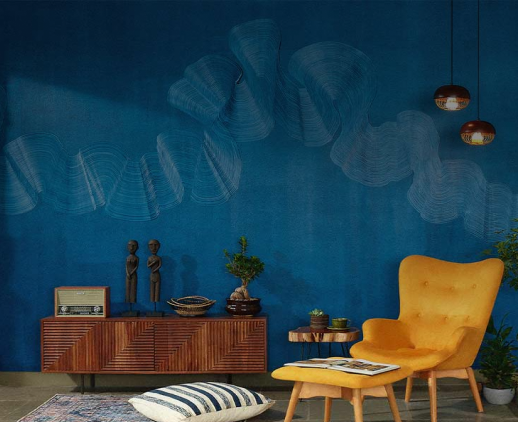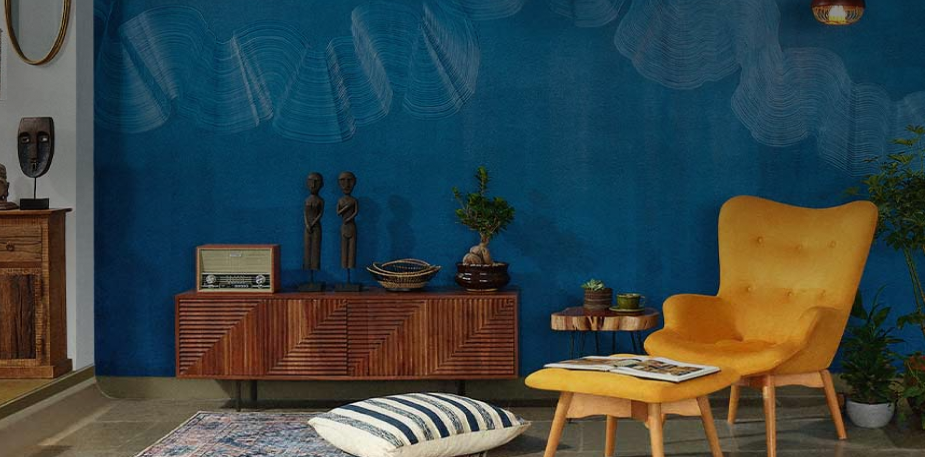Get your home interior design budget estimate
When home is wherever they are together

In the last of our three-part series on modern living, our columnist Sunaina Kumar speaks to inter-cultural couples to come to the conclusion that home is not just a physical location, it is not always a house that one grows up in, it can be a space you build anywhere in the world with a loved one
What is it like to come home to a place that you’ve never called home? This is a question that Julia has been pondering a lot lately. The most complicated question for her has always been, “where are you from?” She is a writer who grew up in Germany with a one-sided “migration background”, her father migrated from India to Germany where he met her mother and she has lived in Columbia and the UK. Her partner, Pauli, who works with an intergovernmental organisation, grew up in Kenya with a two-sided “migration background”, his parents are of Indian and Italian origin, he has lived in Germany and in India. Julia and her partner are in the process of setting up a home in Delhi, a city that neither of them has ever lived in, but where work, love and serendipity has brought them to lay down roots for the time being.
A Home That Brings Two People Together
“It’s hard to believe we are in this city and arguing over the colour of bedsheets and patterns on cushions. I want to get everything in black and white and she likes vivid colours,” he laughs over the unexpected situation. While hunting for a house in Delhi, one of the things he was determined to find was proximity to green space, influenced by his growing up in Nairobi with green spaces and birds and animals all around. They have found a house next to a city forest in the southern part of the city.

For her, home is at once a physical place and a metaphorical idea. “Home for me is not just one place, but it’s many places. It’s exhausting sometimes to not have a fixed place, but it also teaches me to create that space within myself to feel home everywhere,” she says. In their house in Delhi, she has a room that is all hers, to read her books, to think, to write, a place for her to be herself.
In the wake of globalisation, increased mobility, the spread of communication technology, intercultural relationships have become commonplace and our idea of home is constantly being reshaped.
Home is not just a physical location, it is not always a house that one grows up in, it can be a space you build anywhere in the world with a loved one. When they moved from Delhi to Kochi to Kottayam, one of the things that Joe and Murielle did in their home was to knock down the walls of the kitchen. Unlike the usual Indian home layout where the kitchen is always separated and the purview of the woman of the house where she spends her time, they were determined to do it differently. “We like to host a lot and while cooking we want to be able to interact with our guests,” says Joe, a clothes designer. They built an open plan room with the living room, dining room and kitchen, a feature common in European homes. And yet, this room, the heart of their house, is unmistakably Indian in aesthetic, from the walls in Indian yellow to the use of traditional furniture and fabrics.
Home As A Blending Of Two Lives And Cultures
Murielle is from France and Joe is from Kerala. Their home is a reflection of intercultural design, a new and trendy field. Intercultural design, according to one description, builds on the communication and sometimes miscommunication between two cultures, leading to a design that reflects the shared overlapping space between the two cultures. The furniture in their house is both minimalist, in a way that accommodates her aesthetic and yet many of the pieces are recuperated from old homes in Kerala, a passion of his. Murielle, who runs an Ayurveda and arts centre, has been living away from her home in France for close to three decades. Home for her is not a geographical place, she says, it is anywhere she can be with Joe.
The feeling of belonging everywhere and nowhere is becoming more common in our times. “You only are free when you realise you belong no place — you belong every place — no place at all,” Maya Angelou once said in an interview in the 1970s, a statement that seems truer today than ever. The word multicultural has been overused. I find the term third culture kid more appropriate in the way it denotes the distancing that exists between people and where they come from and what they call home. In some ways, many of us have started living like third culture kids, a term that was coined in the 1950s by Ruth Hill Useem, a sociologist from the United States. It originally referred to children of mixed identity and has been updated in recent times to include refugees, politically displaced people and those whose work or lifestyle leads them to settle in another part of the world.
As Murielle says, “There are two ideas of home, the home that I come from and the home we have been building over the years. We always talk about differences in mixed couples, but I think it’s more about putting things together, of creating a mosaic, that’s our home.”

Get Started with your interior design journey with us!
Speak to our design professionals
What’s the status of your home possession?
What’s the condition of your home/space?
Will you be living in your space during the renovation?
 Previous Question
Previous Question
Is your interior design budget over 4 lakhs?
 Previous Question
Previous Question
Book next available appointment slots with our experts!
Please Select Date and Day
 Previous Question
Previous Question

Something went wrong!
We were unable to receive your details. Please try submitting them again.

Appointment Scheduled!
Thank you for giving an opportunity to Asian Paints Beautiful Homes Service! Our Customer Experience Specialist will get in touch with you soon.
Appointment Date & time
Thank You!
Our team will contact you for further details.
What’s the status of your home possession?
What’s the condition of your home/space?
Will you be living in your space during the renovation ?
 Previous Question
Previous Question
Is your interior design budget over 4 lakhs?
 Previous Question
Previous Question
Book next available appointment slots with our experts!
DEC 2023
Please Select Date and Day
 Previous Question
Previous Question

Something went wrong!
We were unable to receive your details. Please try submitting them again.

Appointment Scheduled!
Thank you for giving an opportunity to Asian Paints Beautiful Homes Service! Our Customer Experience Specialist will get in touch with you soon.
Appointment Date & time
17 Oct 23, 03.00PM - 04.00PM





































